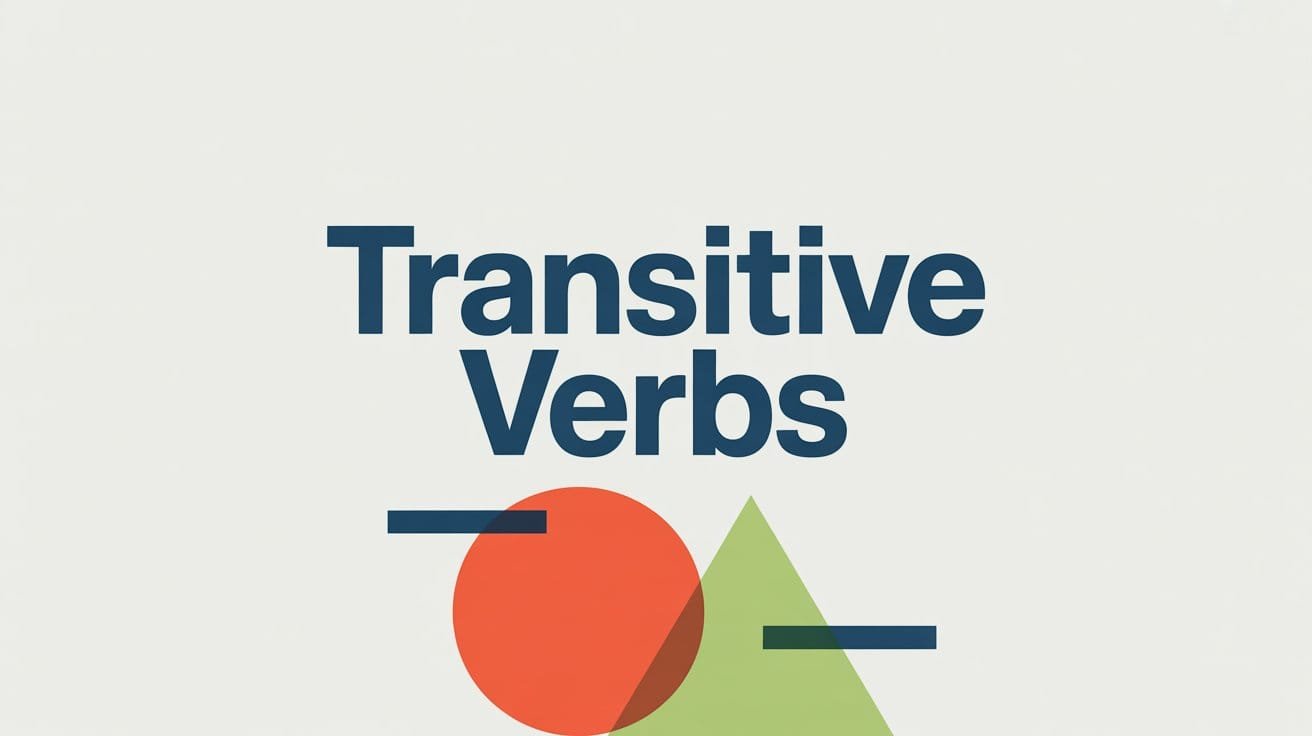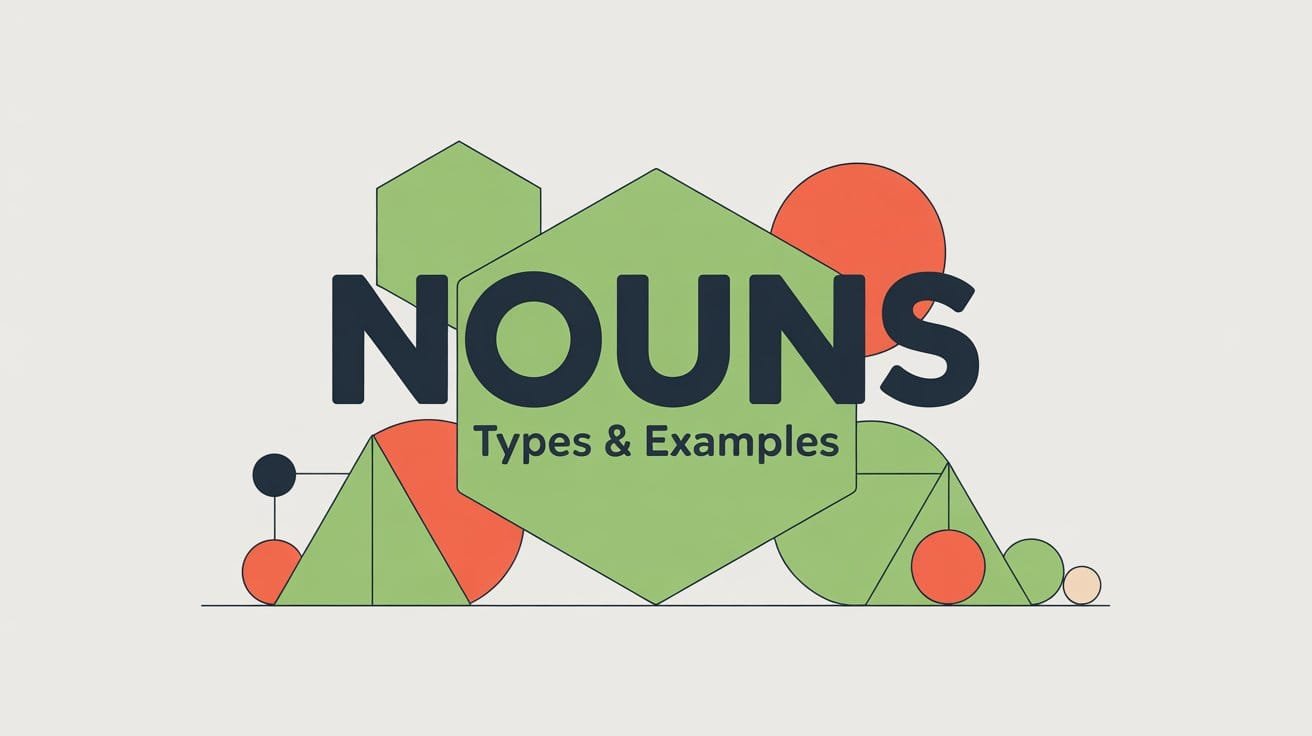Some verbs don’t make complete sense on their own; they need something to receive the action. These are called transitive verbs, and they always require a direct object to complete their meaning. For example, in the sentence Nina baked a cake, the verb baked is transitive because the action affects something specific—the cake. Without the object, the sentence feels unfinished.
In this guide, you’ll learn how transitive verbs function, how to recognize them, and how they differ from intransitive verbs, with examples that reflect everyday usage.
What Is a Transitive Verb?
A transitive verb is a verb that requires a direct object to complete its meaning. The action of the verb must transfer to someone or something. Otherwise, the sentence feels incomplete.
For example, in the sentence The teacher assigned homework, the verb assigned needs a direct object (homework) to make sense. If you say The teacher assigned, the listener is left asking, assigned what?
Transitive verbs are different from intransitive verbs, which do not need a direct object. A transitive verb always answers what? or whom? after the verb, giving the sentence its full meaning.
How to Identify a Transitive Verb
To identify a transitive verb, ask what? or whom? immediately after the verb. If the answer completes the sentence meaningfully with a direct object, the verb is transitive.
Take this example:
Jasmine repaired the lamp.
Ask: Jasmine repaired what?
Answer: the lamp → This is the direct object, so repaired is a transitive verb.
Now consider:
They praised the new intern.
Ask: They praised whom?
Answer: the new intern → The verb praised is also transitive.
If there’s no object or if the verb doesn’t transfer its action to anyone or anything, it’s not transitive. Some verbs change type based on how they’re used, so this question test is a reliable way to check.
Being able to spot the direct object is the key to recognizing a transitive verb.
Examples of Transitive Verbs in Sentences
Below are sentence examples showing transitive verbs in action. In each case, the verb transfers its action to a direct object, which answers what? or whom?
- Marcus delivered the documents on time.
(What did Marcus deliver? → the documents) - They adopted a stray kitten from the shelter.
(Whom did they adopt? → a stray kitten) - She wrote a detailed email to the team.
(What did she write? → a detailed email) - The manager approved the new policy without changes.
(What did the manager approve? → the new policy) - We watched the entire series over the weekend.
(What did we watch? → the entire series) - Nadia invited her cousin to the graduation dinner.
(Whom did Nadia invite? → her cousin)
Difference Between Transitive and Intransitive Verbs
The main difference between transitive and intransitive verbs lies in whether or not the verb needs a direct object to complete its meaning.
A transitive verb requires an object:
- The chef prepared the meal.
(What did the chef prepare? → the meal)
An intransitive verb does not:
- The children laughed loudly.
(There is no object receiving the action; the sentence is complete as is.)
Some verbs can function as both, depending on how they are used:
- She runs five miles every morning. (runs = transitive; five miles = object)
- She runs every morning. (runs = intransitive; no object)
Recognizing this difference helps improve sentence structure, especially when choosing verbs that fit the intended meaning. Always check whether the verb needs something to act upon, or whether it stands alone.
Ditransitive Verbs in English
A ditransitive verb is a type of transitive verb that takes two objects: a direct object and an indirect object. These verbs describe an action that transfers something from one person or thing to another.
The usual pattern is:
Subject + verb + indirect object + direct object
Example:
- She gave her friend a book.
Here: - her friend = indirect object (who received something)
- a book = direct object (what was given)
You can also rephrase it using a prepositional phrase:
- She gave a book to her friend.
Both forms are grammatically correct, but the direct + indirect object structure is more compact and commonly used in speech and writing.
Verbs That Can Be Both Transitive and Intransitive
Some verbs in English can function as either transitive or intransitive, depending on how they are used in a sentence. This can be confusing for learners because the same verb may or may not require a direct object, based entirely on context.
Example:
- My sister runs every morning. → Intransitive (no object)
- My sister runs a small café. → Transitive (a small café is the direct object)
The verb run doesn’t always need something to receive the action, but it can if the meaning shifts from physical motion to business operation.
Here are more examples of dual-function verbs:
- Open
– The store opens at 9 a.m. (intransitive)
– Please open the window. (transitive) - Change
– Your attitude has changed. (intransitive)
– She changed the schedule. (transitive) - Grow
– The children are growing quickly. (intransitive)
– They grow tomatoes in the backyard. (transitive)
FAQs About Transitive Verbs
What is a direct object in a sentence?
Can a verb be both transitive and intransitive?
Yes. Many verbs in English can function as either, depending on how they are used.
Intransitive: He speaks clearly.
Transitive: He speaks three languages.
Are linking verbs transitive?
No. Linking verbs do not take direct objects. They connect the subject to a complement that describes or renames it.
Example: She is a teacher. (is = linking verb, not transitive)
How can I tell if a verb is transitive?
Ask what? or whom? after the verb. If the sentence gives a clear answer in the form of a direct object, the verb is transitive.
He kicked the ball. (Transitive)
He kicked. (Incomplete without an object)



